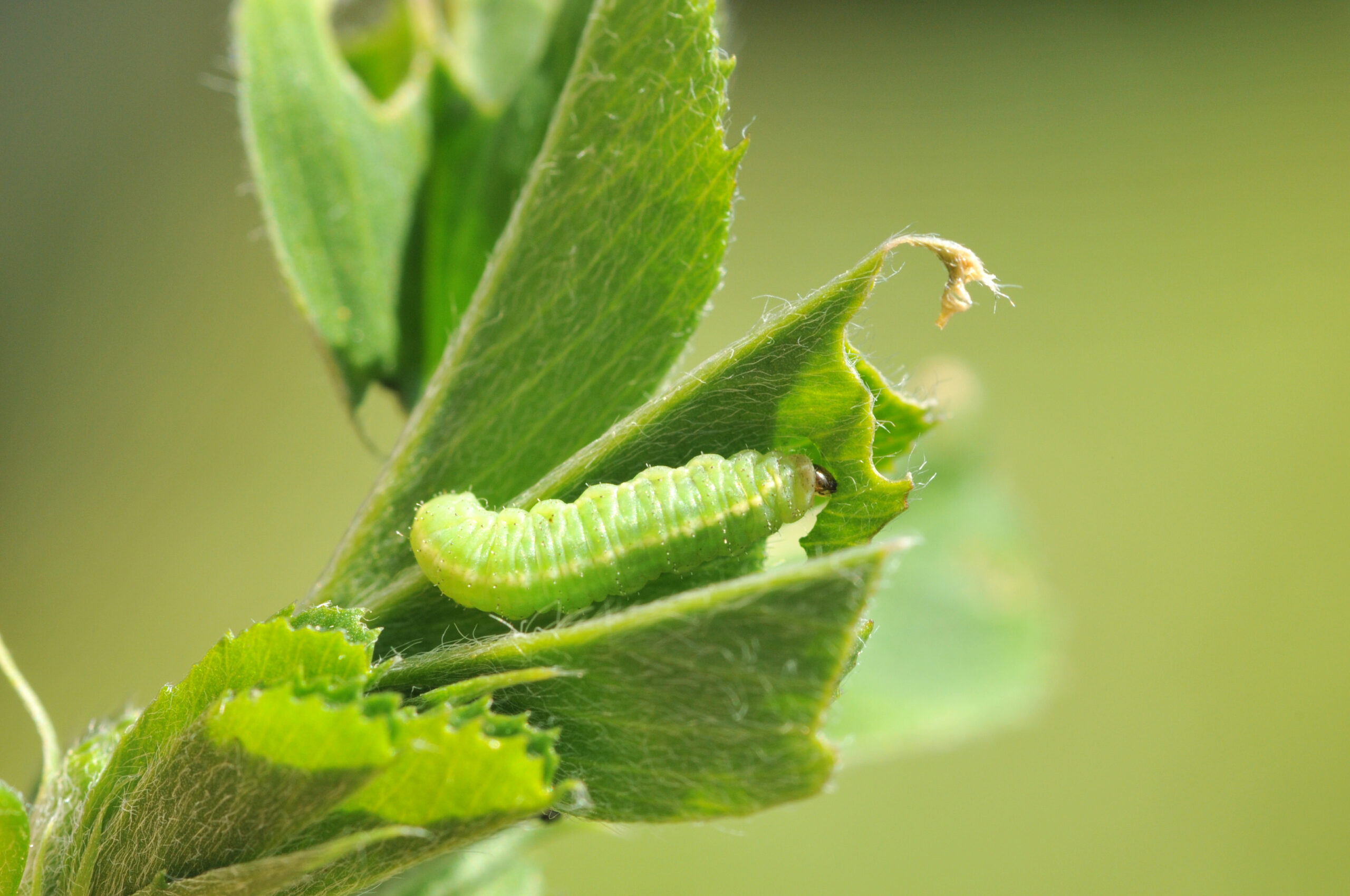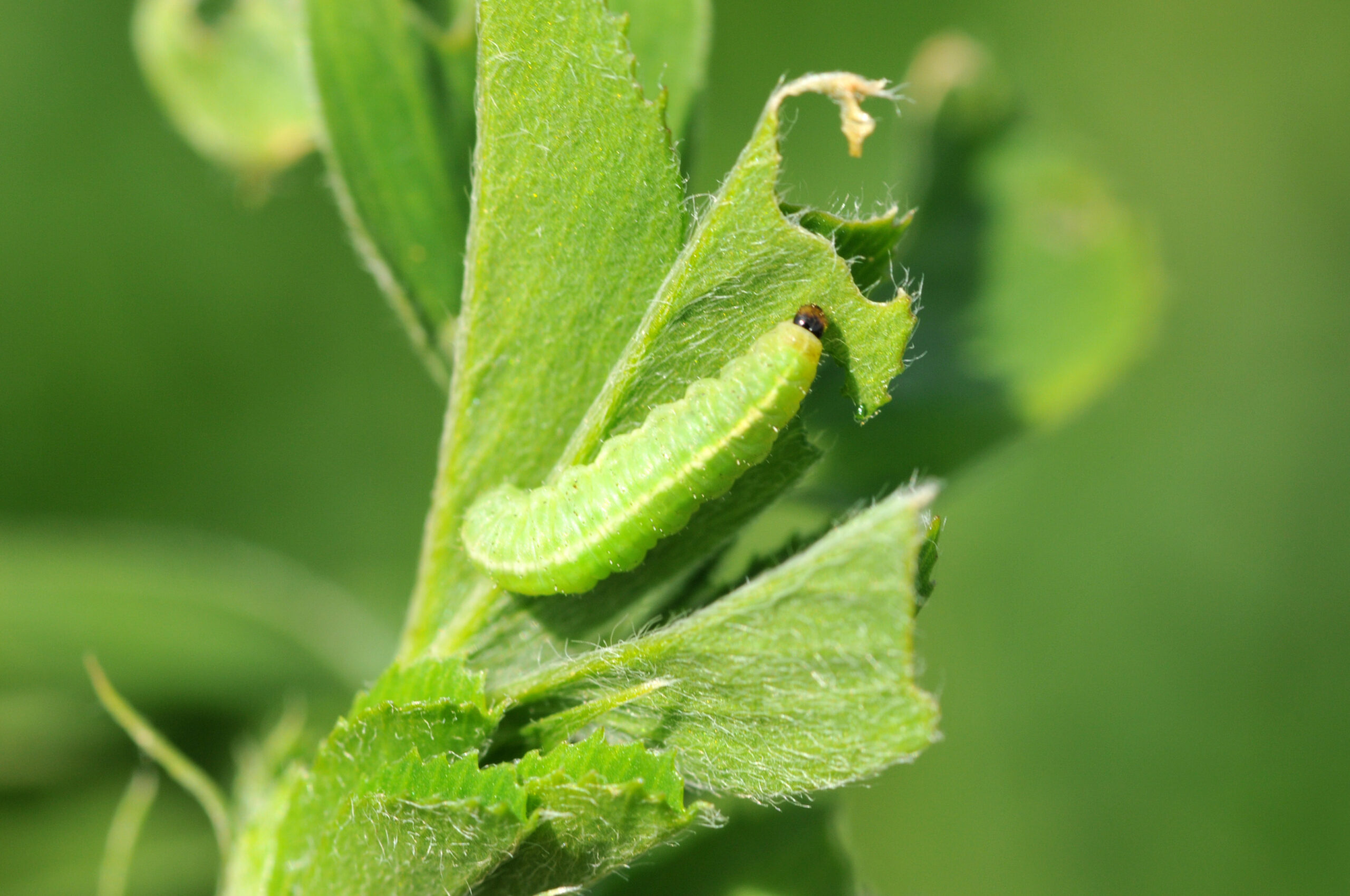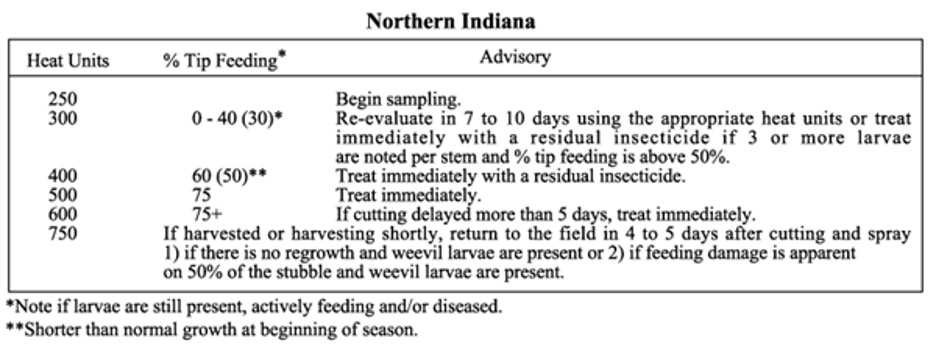Alfalfa Weevils (Forage)
Hypera postica Gyllenhal
Search the Pest & Crop Newsletter

The ability to see these full-sized life-cycle images is currently disabled to resolve an issue.
Related Video Resources:
Appearance and Life History

Photo by J. Obermeyer
The most important early season insect pest of alfalfa in the Midwest is the alfalfa weevil. Infestations of this insect can be very destructive, and alfalfa acreage should be closely monitored in spring.
The adult alfalfa weevil is a light brown snout beetle distinguished by a darker brown strip down the center of its back. It is typically about 3/16 inch (4.7 mm) in length.
The alfalfa weevil larva is a small, light green worm with a wide, white stripe down the center of its back, paralleled by a lighter strip down each side. When fully grown, it will reach 3/8 inch (9 mm) in length. It is very similar in appearance to the larva of the clover leaf weevil. To distinguish between larvae of these two species, carefully examine the head. The alfalfa weevil larva has a black head, while the larva of the clover leaf weevil has a brown head.

Photo by J. Obermeyer
Damage

Photo by J. Obermeyer
In early spring, alfalfa weevil larvae hatch from eggs deposited in the plant stems and begin feeding within the folded leaves at the growing tips. As these leaves unfold, the early larval instar damage appears as tiny “pinholes” in the leaves.
As the larvae grow, they chew larger holes, giving the plants a shredded or skeletonized appearance. A heavy infestation of larvae can consume enough foliage that an entire field may take on a grayish appearance.
Adult weevil feeding damage is usually minor, taking the form of small, circular cuts along leaf margins. Adults usually feed on lower leaves. Adults feeding on the stems shortly after the first cutting can produce damage known as “bark feeding.”
Sampling Method
Before First Cutting.

Photo by J. Obermeyer
- Field scouting for alfalfa weevil damage should begin when approximately 250 heat units [base 48°F (8.9°C)] have accumulated from January 1.
- Walk the field in an M-shaped pattern.
- Examine five alfalfa stems in each of 5 areas of a field for a total of 25 stems for the entire field. Each stem should be examined for:
- Evidence of feeding by alfalfa weevil larvae
- Maturity of the stem, i.e., pre-bud, bud, and/or flowers
- Stem length
- Note the average size (length) of weevil larvae. Developing shoots showing “pin-hole” feeding may have to be torn apart to find the small larvae.
- Warm, wet springs can encourage the development of a naturally occurring fungal disease, Zoophthora phytonomi. Alfalfa weevil larvae are very susceptible to this pathogen, and it can spread quickly throughout the population. Infected larvae move slowly and become discolored, progressing from yellow to brown and finally black. Diseased larvae are likely to be noted during scouting activities.
After First Cutting.
- Even though harvesting a weevil-infested field is usually an excellent means of control, alfalfa weevil may continue to cause severe damage by feeding on the stubble and new growth. Fields should be scouted 4 to 5 days after the first cutting has been removed to determine if the weevils are still present and feeding.
- Examine at least 5 plants in each of 5 areas. Look for clipping of developing shoots by weevil larvae or stem or leaf feeding by adult weevils.
- Determine the percentage of stems with feeding damage and/or note if weevils are feeding on the shoots.
Management Guidelines
Forage Insect Control Recommendations: E-series 220-W (PDF)
- Use the following charts for southern and northern Indiana to determine if control is warranted.


